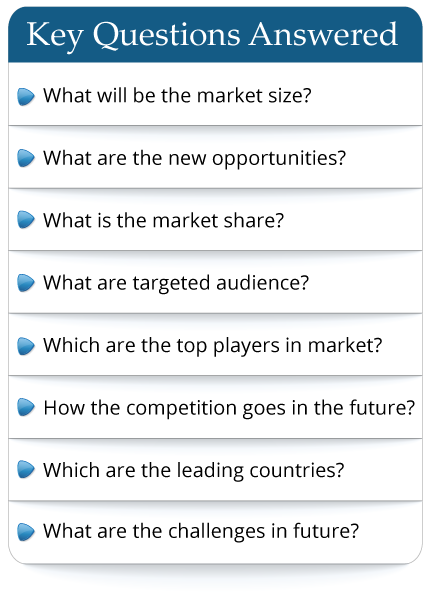Imprinting technology is an ancient technique for the reproduction of writings on appropriate supports. Since 1990´s, one of the imprinting techniques, i.e., injection moulding has been used for compact disk (CD) production. More recently, the semiconductor industry is interested in imprint related techniques because of the mass production requirement of future microelectronic circuits with a possible critical dimension down to a few nanometers. At this deep nanometer scale, traditional photolithography is supposed to rule out because of the optical diffraction or material limitations. In fact, the actual minimum feature size in an integrated circuit (IC) is already less than 50 nm and the actual manufacturing systems are already extremely sophisticated and expensive. The semiconductor industry has always been looking for alternative patterning methods in order to follow Moore´s law, which has been formulated to predict the evolution of the technology nodes. Now, extreme UV lithography (EUV), 193 nm immersion lithography, mask less lithography (MLL) techniques and nanoimprint lithography (NIL) are considered as candidates for the so called Next Generation Lithography (NGL) at 32 nm and 22 nm nodes. In parallel, imprint technology has been promoted by a large scientific community and non-IC industry segments including high-density storage, optoelectronics, telecommunication as well as biochips or micro total analysis systems.
The global Nanoimprint Lithography Equipment market was valued at US$ 94 million in 2023 and is anticipated to reach US$ 165.1 million by 2030, witnessing a CAGR of 8.2% during the forecast period 2024-2030.
Global Nanoimprint Lithography System key players include Obducat, EV Group, Canon(Molecular Imprints), etc. Global top three manufacturers hold a share about 75%.
Europe is the largest market, with a share about 53%, followed by China and North America, both have a share about 35 percent.
In terms of product, UV-based Nanoimprint Lithography (UV-NIL) is the largest segment, with a share about 40%. And in terms of application, the largest application is Optical equipment, followed by Consumer electronics, etc.
This report aims to provide a comprehensive presentation of the global market for Nanoimprint Lithography Equipment, with both quantitative and qualitative analysis, to help readers develop business/growth strategies, assess the market competitive situation, analyze their position in the current marketplace, and make informed business decisions regarding Nanoimprint Lithography Equipment.
Report Scope
The Nanoimprint Lithography Equipment market size, estimations, and forecasts are provided in terms of output/shipments (K Units) and revenue ($ millions), considering 2023 as the base year, with history and forecast data for the period from 2019 to 2030. This report segments the global Nanoimprint Lithography Equipment market comprehensively. Regional market sizes, concerning products by Type, by Application, and by players, are also provided.
For a more in-depth understanding of the market, the report provides profiles of the competitive landscape, key competitors, and their respective market ranks. The report also discusses technological trends and new product developments.
The report will help the Nanoimprint Lithography Equipment manufacturers, new entrants, and industry chain related companies in this market with information on the revenues, production, and average price for the overall market and the sub-segments across the different segments, by company, by Type, by Application, and by regions.
Market Segmentation
By Company
Obducat
EV Group
Canon (Molecular Imprints)
Nanonex
SUSS MicroTec
GuangDuo Nano
Segment by Type
Hot Embossing (HE)
UV-based Nanoimprint Lithography (UV-NIL)
Micro Contact Printing (µ-CP)
Segment by Application
Consumer Electronics
Optical Equipment
Others
Production by Region
North America
Europe
China
Japan
Consumption by Region
North America
United States
Canada
Europe
Germany
France
U.K.
Italy
Russia
Asia-Pacific
China
Japan
South Korea
China Taiwan
Southeast Asia
India
Latin America, Middle East & Africa
Mexico
Brazil
Turkey
GCC Countries
Chapter Outline
Chapter 1: Introduces the report scope of the report, executive summary of different market segments (by region, by Type, by Application, etc), including the market size of each market segment, future development potential, and so on. It offers a high-level view of the current state of the market and its likely evolution in the short to mid-term, and long term.
Chapter 2: Detailed analysis of Nanoimprint Lithography Equipment manufacturers competitive landscape, price, production and value market share, latest development plan, merger, and acquisition information, etc.
Chapter 3: Production/output, value of Nanoimprint Lithography Equipment by region/country. It provides a quantitative analysis of the market size and development potential of each region in the next six years.
Chapter 4: Consumption of Nanoimprint Lithography Equipment in regional level and country level. It provides a quantitative analysis of the market size and development potential of each region and its main countries and introduces the market development, future development prospects, market space, and production of each country in the world.
Chapter 5: Provides the analysis of various market segments by Type, covering the market size and development potential of each market segment, to help readers find the blue ocean market in different market segments.
Chapter 6: Provides the analysis of various market segments by Application, covering the market size and development potential of each market segment, to help readers find the blue ocean market in different downstream markets.
Chapter 7: Provides profiles of key players, introducing the basic situation of the main companies in the market in detail, including product production/output, value, price, gross margin, product introduction, recent development, etc.
Chapter 8: Analysis of industrial chain, including the upstream and downstream of the industry.
Chapter 9: Introduces the market dynamics, latest developments of the market, the driving factors and restrictive factors of the market, the challenges and risks faced by manufacturers in the industry, and the analysis of relevant policies in the industry.
Chapter 10: The main points and conclusions of the report.
The global Nanoimprint Lithography Equipment market was valued at US$ 94 million in 2023 and is anticipated to reach US$ 165.1 million by 2030, witnessing a CAGR of 8.2% during the forecast period 2024-2030.
Global Nanoimprint Lithography System key players include Obducat, EV Group, Canon(Molecular Imprints), etc. Global top three manufacturers hold a share about 75%.
Europe is the largest market, with a share about 53%, followed by China and North America, both have a share about 35 percent.
In terms of product, UV-based Nanoimprint Lithography (UV-NIL) is the largest segment, with a share about 40%. And in terms of application, the largest application is Optical equipment, followed by Consumer electronics, etc.
This report aims to provide a comprehensive presentation of the global market for Nanoimprint Lithography Equipment, with both quantitative and qualitative analysis, to help readers develop business/growth strategies, assess the market competitive situation, analyze their position in the current marketplace, and make informed business decisions regarding Nanoimprint Lithography Equipment.
Report Scope
The Nanoimprint Lithography Equipment market size, estimations, and forecasts are provided in terms of output/shipments (K Units) and revenue ($ millions), considering 2023 as the base year, with history and forecast data for the period from 2019 to 2030. This report segments the global Nanoimprint Lithography Equipment market comprehensively. Regional market sizes, concerning products by Type, by Application, and by players, are also provided.
For a more in-depth understanding of the market, the report provides profiles of the competitive landscape, key competitors, and their respective market ranks. The report also discusses technological trends and new product developments.
The report will help the Nanoimprint Lithography Equipment manufacturers, new entrants, and industry chain related companies in this market with information on the revenues, production, and average price for the overall market and the sub-segments across the different segments, by company, by Type, by Application, and by regions.
Market Segmentation
By Company
Obducat
EV Group
Canon (Molecular Imprints)
Nanonex
SUSS MicroTec
GuangDuo Nano
Segment by Type
Hot Embossing (HE)
UV-based Nanoimprint Lithography (UV-NIL)
Micro Contact Printing (µ-CP)
Segment by Application
Consumer Electronics
Optical Equipment
Others
Production by Region
North America
Europe
China
Japan
Consumption by Region
North America
United States
Canada
Europe
Germany
France
U.K.
Italy
Russia
Asia-Pacific
China
Japan
South Korea
China Taiwan
Southeast Asia
India
Latin America, Middle East & Africa
Mexico
Brazil
Turkey
GCC Countries
Chapter Outline
Chapter 1: Introduces the report scope of the report, executive summary of different market segments (by region, by Type, by Application, etc), including the market size of each market segment, future development potential, and so on. It offers a high-level view of the current state of the market and its likely evolution in the short to mid-term, and long term.
Chapter 2: Detailed analysis of Nanoimprint Lithography Equipment manufacturers competitive landscape, price, production and value market share, latest development plan, merger, and acquisition information, etc.
Chapter 3: Production/output, value of Nanoimprint Lithography Equipment by region/country. It provides a quantitative analysis of the market size and development potential of each region in the next six years.
Chapter 4: Consumption of Nanoimprint Lithography Equipment in regional level and country level. It provides a quantitative analysis of the market size and development potential of each region and its main countries and introduces the market development, future development prospects, market space, and production of each country in the world.
Chapter 5: Provides the analysis of various market segments by Type, covering the market size and development potential of each market segment, to help readers find the blue ocean market in different market segments.
Chapter 6: Provides the analysis of various market segments by Application, covering the market size and development potential of each market segment, to help readers find the blue ocean market in different downstream markets.
Chapter 7: Provides profiles of key players, introducing the basic situation of the main companies in the market in detail, including product production/output, value, price, gross margin, product introduction, recent development, etc.
Chapter 8: Analysis of industrial chain, including the upstream and downstream of the industry.
Chapter 9: Introduces the market dynamics, latest developments of the market, the driving factors and restrictive factors of the market, the challenges and risks faced by manufacturers in the industry, and the analysis of relevant policies in the industry.
Chapter 10: The main points and conclusions of the report.
Frequently Asked Questions
This market study covers the global and regional market with an in-depth analysis of the overall growth prospects in the market. Furthermore, it sheds light on the comprehensive competitive landscape of the global market. The report further offers a dashboard overview of leading companies encompassing their successful marketing strategies, market contribution, recent developments in both historic and present contexts.
- By product type
- By End User/Applications
- By Technology
- By Region
The report provides a detailed evaluation of the market by highlighting information on different aspects which include drivers, restraints, opportunities, and threats. This information can help stakeholders to make appropriate decisions before investing.

 Pre-order Enquiry
Pre-order Enquiry Request Free Sample
Request Free Sample












